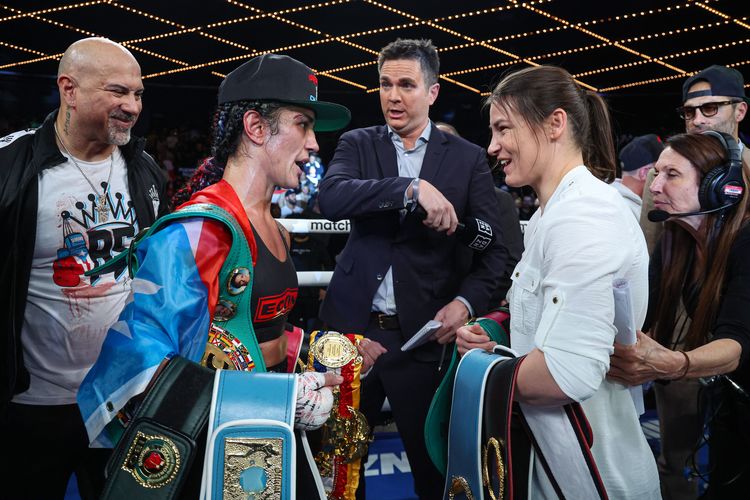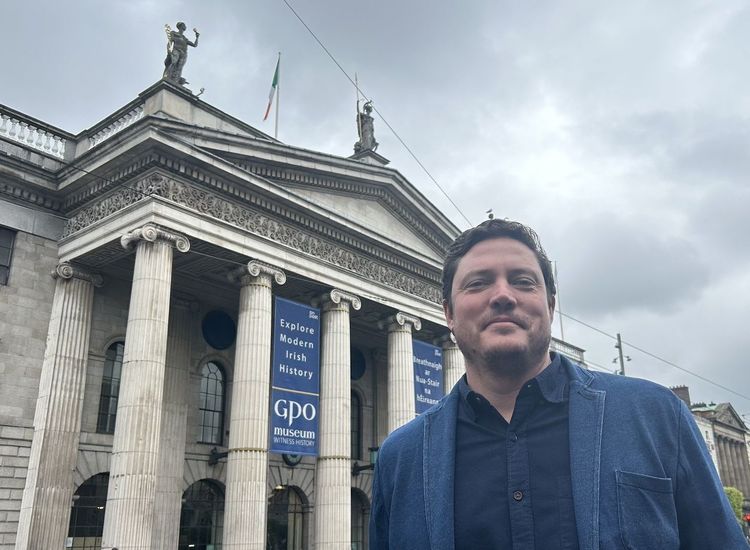Mícheál Ó Súilleabháin.
By Colleen Taylor
This past week, at the American Conference for Irish Studies, the sounds of the 18th century met the 21’s at Notre Dame’s performing arts center. Mícheál Ó Súilleabháin, chair of music at University of Limerick, performed a “recital lecture” for the conference attendees. Ó Súilleabháin mused on the historic and global ties between 18th century Irish tunes like O’Carolan’s and the music that characterized early 20th century Irish nationalism, like that of Seán Ó Riada. The recent centenary celebration of 1916 hung in the air as Ó Súilleabháin traced what Irish music has gained and contributed to a global community of sonar expression.
The conference theme, “The Worlding of Irish Studies,” was central to Ó Súilleabháin’s ideas and to his performance. Ó Súilleabháin moved between using his own scholarly voice to highlight the influences of Irish music to applying his own skill as a pianist to make the point. He mapped a lineage that went as far back as the famous 18th century blind harper Turlough O’Carolan, to Seán Ó Riada and the film “Mise Eire,” all the way up to the Chieftains and some bands playing today in the wake of their legacy.
Most remarkably, Ó Súilleabháin was able to make his piano speak the critical argument he was making for the longevity and malleability of Irish national music. He performed old 18th century tunes like “March of the King of Laois.” The lecture’s main point was that Irish music has always been a cultural mediator, and Ó Súilleabháin acted as O’Carolan’s cultural mediator for his audience that night. The piano strings mediated 18th-century harp tunes through a new, atypical form. Sounds meant for Irish harp strings were transmitted to an audience, three centuries later, through new, shiny Steinbeck piano strings. Ó Súilleabháin matched his former teacher Ó Riada in this vein, using classical training and classical European instruments to revitalize ancient Irish sounds.
Ó Súilleabháin’s music moved his audience in a way that surprised me. You would not expect a single piano and single musician playing such old tunes—which, simply because of their age, would natrurally sound alien to our twenty-first century ears—to resonate so profoundly. But when Ó Súilleabháin came to the close of a tune, I could sense the trance in which his melodies had placed the audience. Each time, there was an audible, charged silence before a burst of applause. His music effected what his words said: “It’s like music is a form of knowledge, but it’s not language. You listen, you intellecutalize, and you feel.” The audience expected to intellectualize that night—you would, of course, at an academic conference. But I suspect they did not anticipate feeling as deeply as they did. I certainly didn’t.
History materialized in the room through Ó Súilleabháin’s multi-media presentation. He shared clips of Ó Riada speaking and playing, and even more effectively, he projected the image of 18th-century sheet music behind his piano as he played the tune on screen. The sense of past and present joined in the piano keyboard and filled the room, as did the legacy of Irish national musical expression. When he played the tune “King of the Blind,” it was as if O’Carolan’s ghost was in the room, the gorgeous, melancholic tenor of the piano extracting Ireland’s musical memory for the audience to traverse.
Ó Súilleabháin pointed out that the genius of Irish music over the years, from Ó Riada to the Chieftains has been what he calls “lobalization”—merging the local with the global scene. Indeed, even as Ó Riada was being pulled into the local and the rural sounds of his nation, he was listening to the sounds of Asia at the same time, allowing the two cultures to speak to each other. He used the musical style of places like Persia to reify and revitalize the Irish national sound. That’s what Ó Súilleabháin’s lecture and his recital of 18th-century tunes achieved as well. The recital-lecture performed a small encore of Ó Riada’s vision, using that local piano at Notre Dame to reify the sounds of an Irish past before a global audience.
I’ll conclude with a quote from Ó Súilleabháin, which speaks beautifully to why and how music has always been so central to Irish identity, as far back as O’Carolan and ever since: “Music is like air and water. It travels through windows and under doors, and seeps into all kinds of cultural forms."
Colleen Taylor writes the Music Notes column in the Irish Echo each week.










